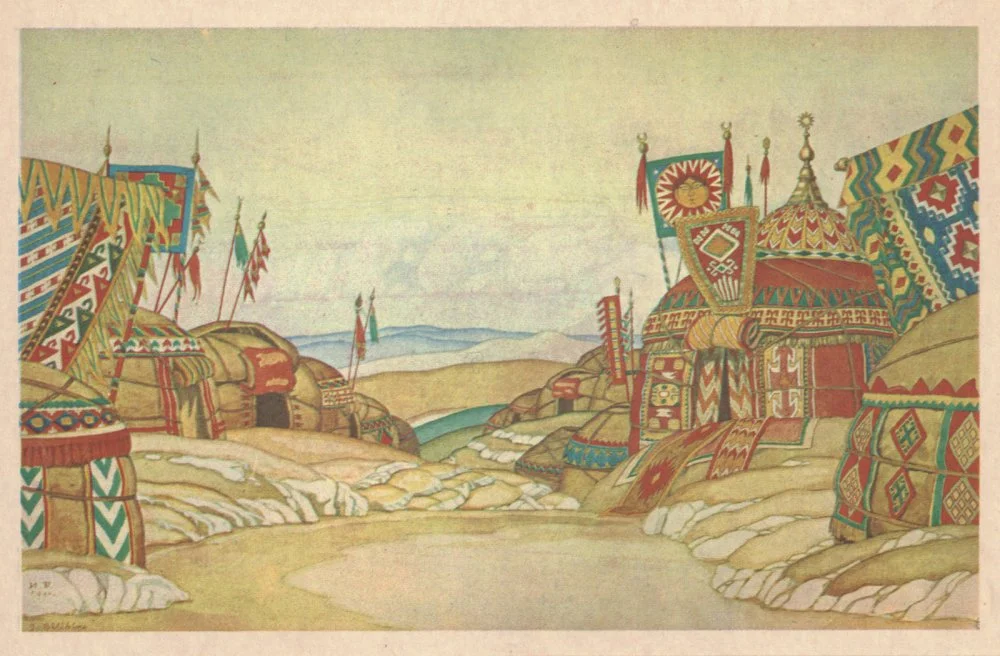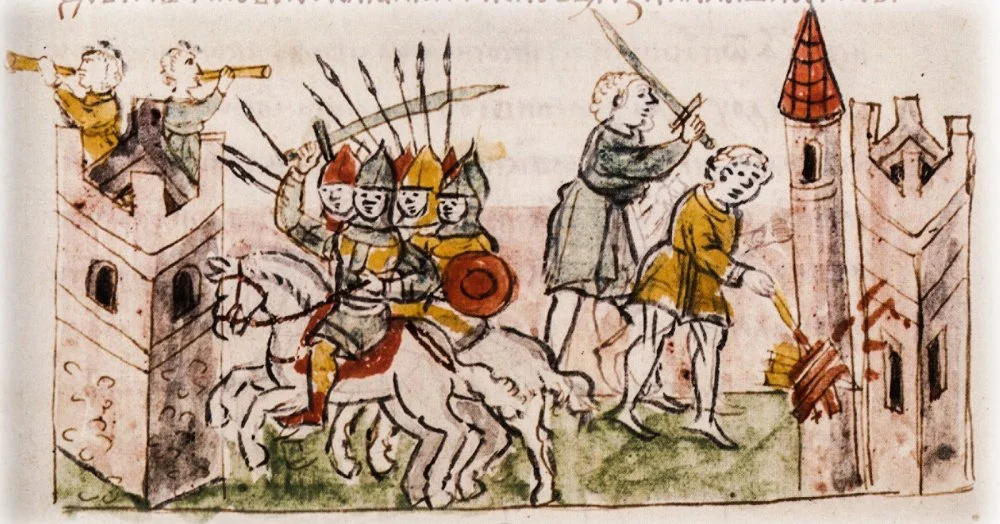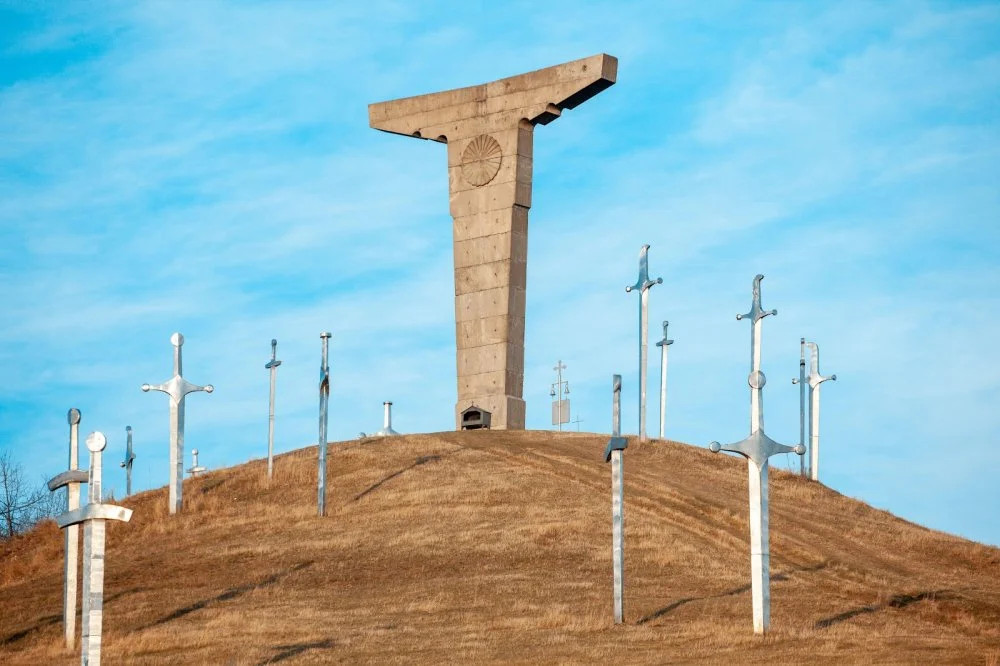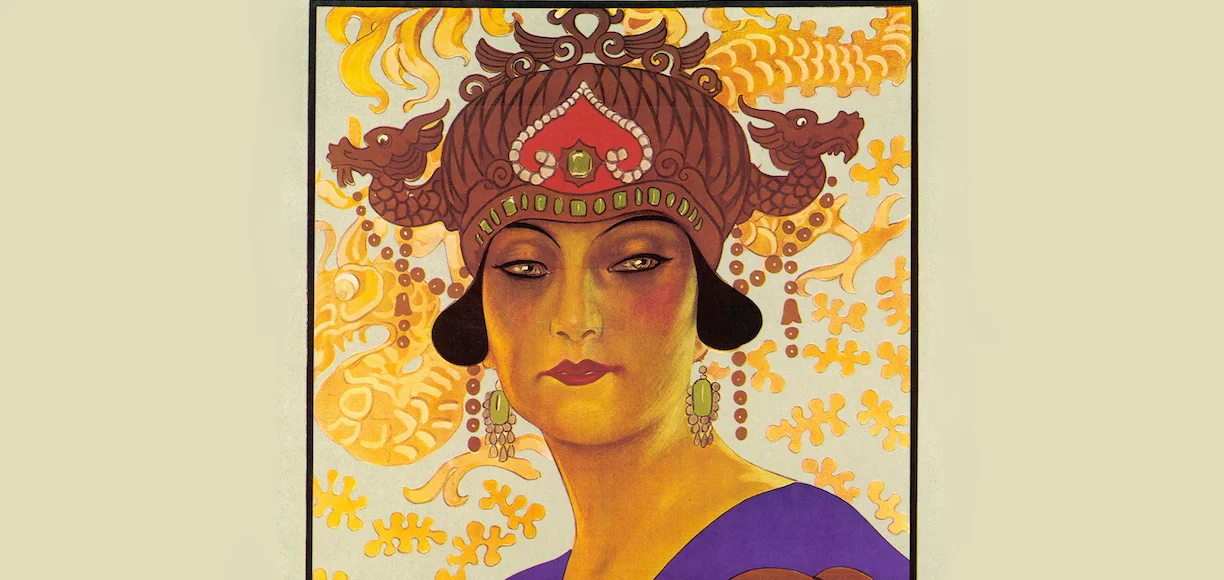Do you remember Carlo Gozzi's fairy tale play Turandot? The one about the cruel Chinese princess who executed the suitors who failed to solve her riddles and a lovestruck Tatar prince? And surely, the princess's name always made you grin? Unlike Italian audiences in the eighteenth century, we know that ‘Turandot’ is not a Chinese name at all. In fact, it's not even really a name! Turandohta means ‘Turanian girl’ or ‘daughter of Turan’, which was what Turkic princesses, the daughters of khans and brides of local rulers, were called in Persia.
The Tale of the Real Turandot: A Prologue
Chroniclers are not really very much different from storytellers—indeed, they often misinterpret names, and we can't always expect them to be precise with details. So, we might as well get into our story with the traditional opening.
Once upon a time, there lived a mighty people in the Great Steppe—the warlike nomads known as the Kipchaks, also called the Polovtsy in Rus’. The Kipchak warriors conquered all of the Great Steppe—from the Altai Mountains in the east to the Carpathian Mountains in the west, and from the Talas River in the south to the forests of western Siberia in the north. The Kipchak Khanate was vast and extensive—in fact, it was so vast that it could no longer be ruled by a single leader. It began to fragment into parts, each governed by its own dynasty. One of the strongest among them was the dynasty founded by Khan Osen (Asen), the ancestor of the powerful Saruhan (or Sharukan).
But at the beginning of the twelfth century, Prince Vladimir Monomakh rose to power in Kievan Rus’, united the scattered lands, and went to war against the Polovtsy. Saruhan’s sons, Saryjan and Artuk (whose name is recorded in various chronicles as Artak, Otrak, and even Otrók), were forced to retreat to the steppes of the northern Caucasus. They captured the city of Belaya Vezha (Ak Orda), the former seat of the Khazar khagans (then known as Sharkel or Sarkel), and ruled unchallenged from there.

The Polovtsy camp. Stage-set design for Act Two of the opera «Prince Igor»by Borodin. 1930/Wikimedia Commons
The Unfortunate Prince
Meanwhile, things were going quite badly in neighboring Georgia. It all started with a palace coup orchestrated by influential courtiers. King George II was forced to abdicate, and his sixteen-year-old son, David, took the throne. David IV inherited the kingdom during a very challenging time: the country was being torn apart by the invading Seljuk Turks. The greatest threat came from the Oghuz, who didn’t just collect tribute and perpetrate constant raids but were determined to take over the entire country. As the ancient Georgian chronicler of King David IV wrote, ‘Every autumn, the Turks would arrive through Somkhiti with all their camps and then “settle” there as well as along the banks of the Kura River, from Tbilisi to Barda.’ And ‘their forces and numbers were so great that people even said, “All the Turks from all sides have gathered there.” No one had the power to forbid them from settling wherever they wished, not even the sultan himself.’
Even before the invasion, Georgia had been fragmented into small principalities, and so David had no army to oppose the Seljuks. Soon, the country found itself on the brink of total destruction.

Сuman's Attack on Kyiv (1096). 15th century/Wikimedia Commons
The Marriage of Princess Turandot
Fortunately for David, Khan Artuk had not only sonsi
The Turks greatly valued their female relatives and were always ready to support them. Olzhas Suleimenov, in his book Az i Ya (Az and Ya), writes:
‘In this formula of diplomatic marriage (a daughter of a strong ruler given to a vassal), the remnants of matriarchal ideology are evident: the woman was considered the head of the family, and her children belonged by blood to her kin. The Turkic proverb “Sons are the children of the mother” expresses the same idea. Her sons would inherit the throne from subordinates. Dynastic marriages had far-reaching goals. The heir to the throne was the son and student of the mother.’ However, Khan Artuk didn’t just give his daughter to a ‘king without a kingdom’; he helped his son-in-law defend that kingdom.
The Decisive Battle
Forty thousand families—numbering about 200,000 people—migrated with Khan Artuk to Georgia. On 12 August 1121, 40,000 fierce and skilled Kipchak warriors joined King David's forces in the battle against the Seljuk army at the field of Didgori near Tbilisi. Even with the Kipchaks, David’s army numbered no more than 60,000, yet they triumphed over the much larger enemy force. This victory has since become a national holiday in Georgia.

Famous Didgori battle monument with giant swards and sculptures. Georgia/Alamy
The Khan’s Nostalgia
Without the support of his father-in-law, it’s unlikely King David, known as ‘David the Builder’, would have been able to unite the country and reclaim Tbilisi and other cities. For four years, the formidable Kipchak warriors backed him in all his efforts, and in gratitude, the king showered them, along with their leader, with honor and glory. Apollo Maikov, a Russian poet (1821–97), dedicated his poem ‘Yemshan’ to Artuk (whom he calls Otrak, in keeping with Russian tradition). He wrote:
Otrak sits in a golden tent,
With Abkhaz beauties all around;
On silver and gold his gifts are sent,
To vassal lords, his honor crowned.
The feast flows on, while slaves in throngs
Exalt him as the sun in songs.
Yet, after living in Georgia for seven years, Khan Artuk returned to his native steppes, called back by his brother, Saryjan. According to the legend celebrated by Maikov, nostalgia overwhelmed him at the scent of the herb yemshan (wormwood), and his words, which became a Kazakh proverb, echo in the Russian chronicle: ‘It is better to lie as bones in your own land than to live in glory on foreign soil.’

King David IV the Builder. Gelati Fresco/Wikimedia Commons
The Tale of Turandot: Epilogue
King David IV died on 24 January 1125. Later, the Orthodox Church canonized him as a saint, and his feast day is celebrated on 26 January. Princess Gurandokhta bore him a son, Vakhtang, but thereafter, any trace of her fades from history and memory.
What to read
Сулейменов Олжас. «Аз и Я». — Москва: Грифон, 2005.
Анчабадзе Г. З. Кыпчаки в Грузии / Г. З. Анчабадзе // Проблемы современной тюркологии : материалы II Всесоюзной тюркологической конференции 27–29 сентября 1976 г., г. Алма-Ата. — Алма-Ата: Наука Казахской ССР, 1980.
Рассказы русских летописей XII–XIV веков / науч. ред. Д. С. Лихачев, науч. ред. А. А. Пауткин, пересказ, предисл., пояснения Т. Н. Михельсон. — М.: Детская литература, 2013.
Артык Сарыханулы // Казахстан. Национальная энциклопедия. — Алматы: Қазақ энциклопедиясы, 2004.
А.Н. Майков. Стихотворения. — М: Детская литература, 1978.
Карло Гоцци. Принцесса Турандот. — Арт Волхонка, 2016.
